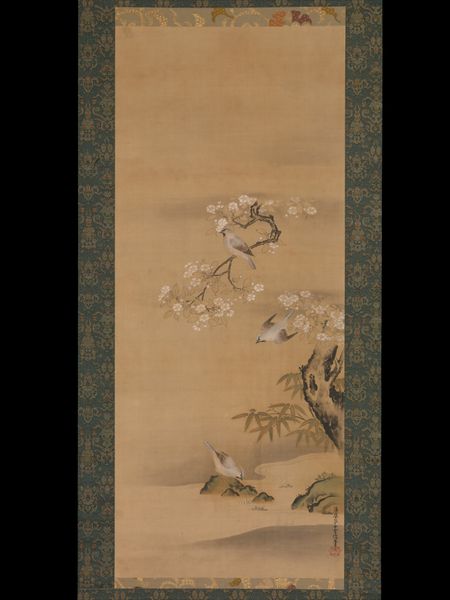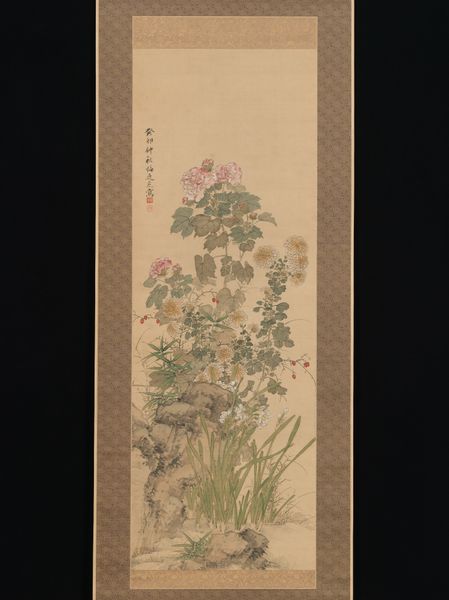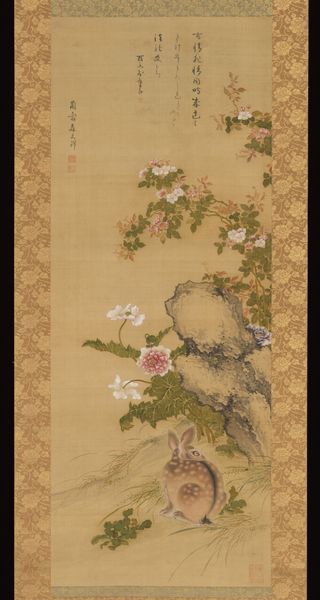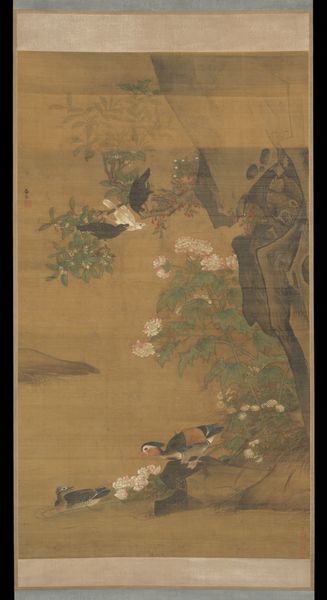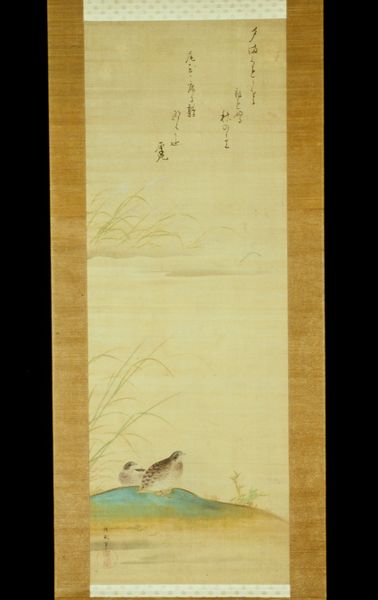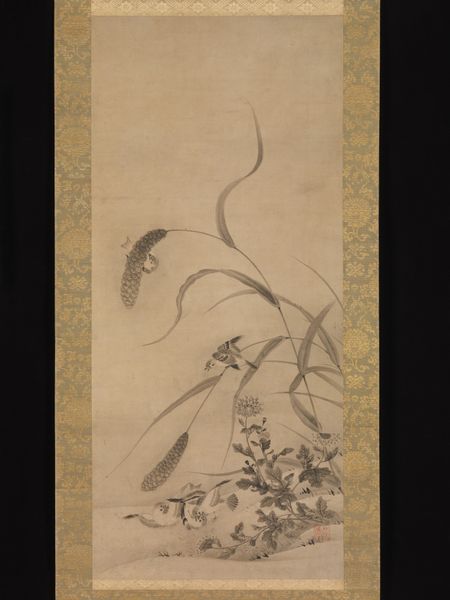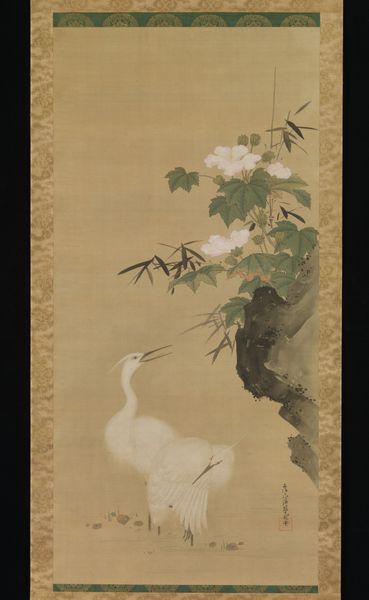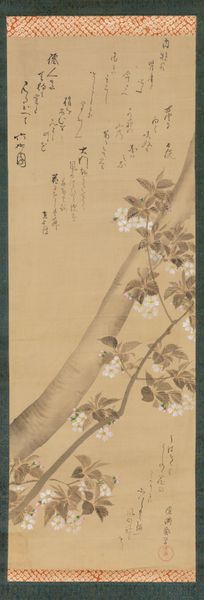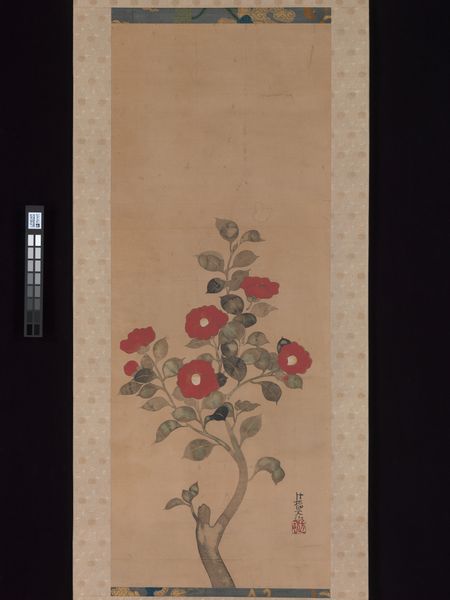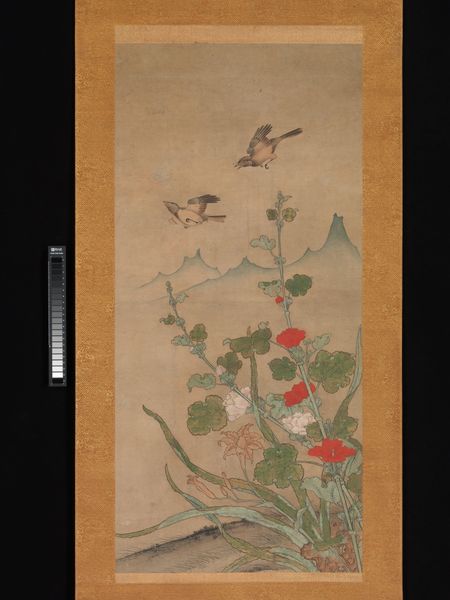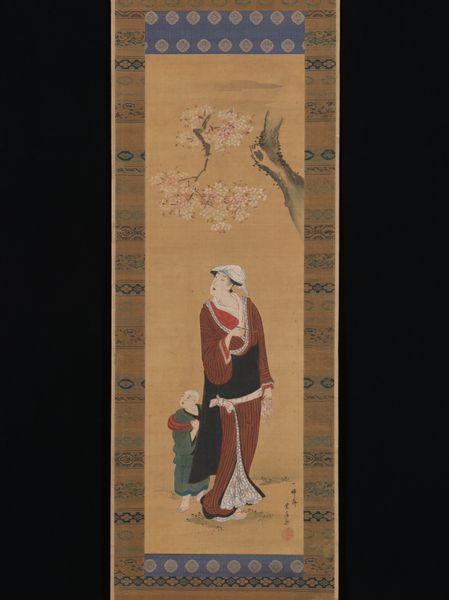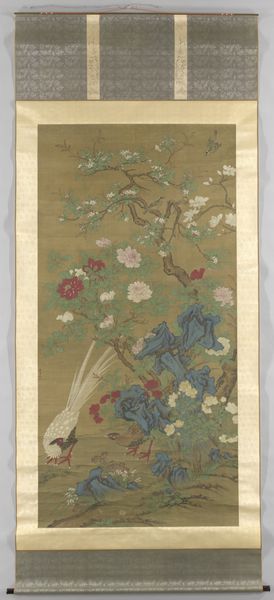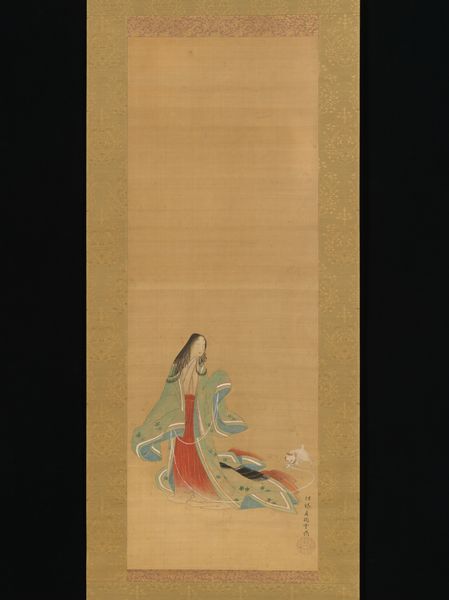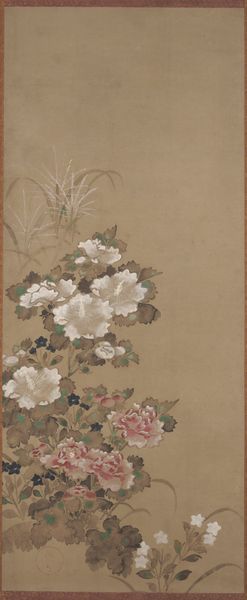
#
type repetition
#
aged paper
#
toned paper
#
homemade paper
#
asian-art
#
woodcut effect
#
bird
#
flower
#
japan
#
script guideline
#
golden font
#
coloring book page
#
watercolor
#
historical font
Dimensions: 38 1/2 x 16 3/8 in. (97.8 x 41.6 cm)
Copyright: Public Domain
Tosa Mitsuoki created "Quail and Autumn Flowers" in the 17th century, using ink and color on silk. Mitsuoki lived during the Edo period, a time when Japanese society was highly structured, and art served to reinforce social hierarchies. As a member of the Tosa school of painting, Mitsuoki was reviving classical Japanese styles, which had strong ties to the Imperial court. Observe how this piece blends naturalism with decorative patterns, representative of the Tosa school. The choice of quails and autumn flowers isn’t accidental; these were popular motifs that carried symbolic meanings, often associated with the seasons and evoking a sense of cultivated harmony. Consider the cultural context: in a period defined by rigid social norms, such artworks offered a controlled, idealized vision of nature, subtly reinforcing the desired social order. We can see this as more than just a depiction of birds and flowers, but as a reflection of the artist's identity and the values of his time. It prompts us to consider how art and identity are always intertwined.
Comments
No comments
Be the first to comment and join the conversation on the ultimate creative platform.
